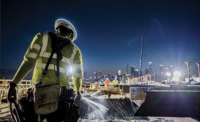Commentary: Seven Ways We Can Afford to Fix American Infrastructure
The nation’s infrastructure is in dire need of repair. But with decimated state budgets and an antiquated funding system that values big, flashy projects over repair and maintenance, finding the money is an uphill battle. And yet, at the five-year anniversary of the I-35W Bridge collapse, it’s critical that we figure out a way.
Here are my suggestions for infrastructure funding reforms.
• Improve funding oversight. The current system for overseeing the distribution of federal aid for state highway projects through the Federal Highway Administration is clearly broken. After funds are distributed to the states, it is hard to determine where the money goes. It’s critically important to ensure that forensic audits are provided for all construction projects in excess of $50 million. With the acknowledged fact that almost half of all labor costs on a project are wasted due to the inefficiencies of the construction industry, a higher level of transparency is needed to protect precious taxpayer dollars.
Since its inception, money collected as part of the federal gas tax has been used to build and repair the nation’s roadways. Over the years, though, state and federal officials have started reaching into that pot to fund other less-critical transportation projects not connected to roadways. Politicians frequently use infrastructure funds on new projects that will help them get re-elected—a practice often referred to as “the politics of ribbon-cutting”—rather than on their state’s much-needed maintenance and repairs.
According to the American Society of Civil Engineers, the amount of money needed to fix and sustain our nation’s infrastructure exceeds $2 trillion. Finding the money will require the federal government to play an active role.
It will require that infrastructure funds collected via an increase in gas taxes be used for their intended purpose. It will entail the development of new, creative relationships between the public and private sectors. It will require a renewed sense of urgency on the part of politicians. And it will involve an extensive re-education of our leaders and the public on how to develop regional transportation planning needed for the future growth of our nation.
• Demand true fixed-price contracts from contractors. When New Jersey Gov. Chris Christie froze plans to build a second rail tunnel under the Hudson River, he did so because he worried that potential cost overruns on the expensive project would be passed on to already struggling taxpayers. Construction cost overruns and missed project deadlines regularly plague projects in both the public and private sectors. The way to combat these cost overruns and protect state budgets and taxpayers from disaster is by demanding true fixed-price contracts.
Most construction contracts contain loopholes that allow contractors to drive up the cost. Standard contracts devised by members of the industry are generally insufficient as they a) fail to properly allocate risk among the parties, and b) provide proven loopholes for contractors to make claims for additional costs.
The right contract for any owner going into a project—be it public or private—is going to be one that offers a true fixed price. Securing true fixed-price contracts on infrastructure projects will require project architects and engineers to deliver construction documents for bidding that are fully detailed, complete in all respects and coordinated with each other.”
• Increase the use of money-saving technology. For a country generally smitten with technology, it’s ironic that it’s noticeably absent in maintaining our nation’s costly infrastructure. Using appropriate technology in our transportation infrastructure will produce enough savings to offset the staggering costs resulting from the past few decades of deferred maintenance. New assessment technologies are central to overcoming the limiting effects of visual inspection for both bridge management and funding allocation, and offer a variety of benefits to transportation departments and the public.





